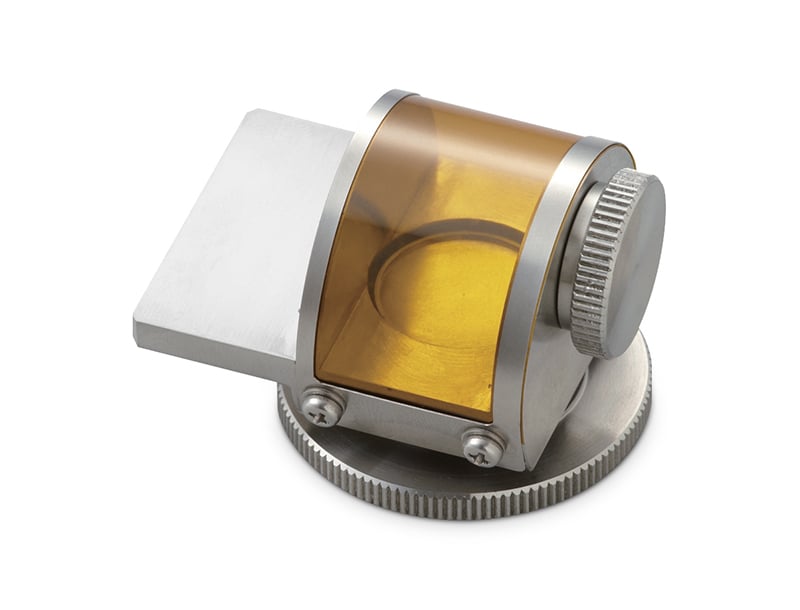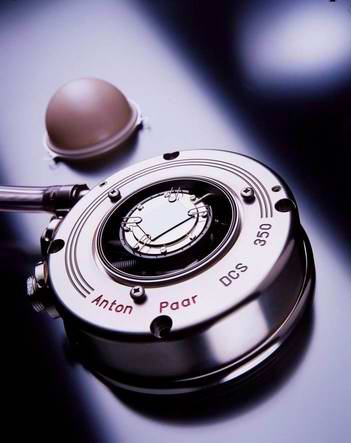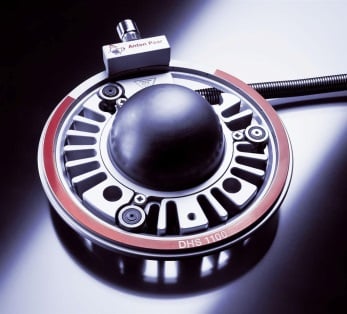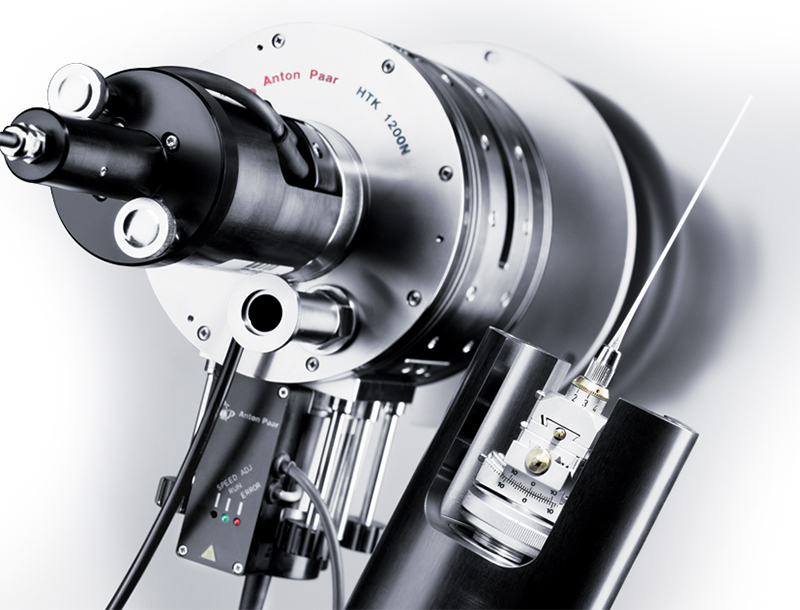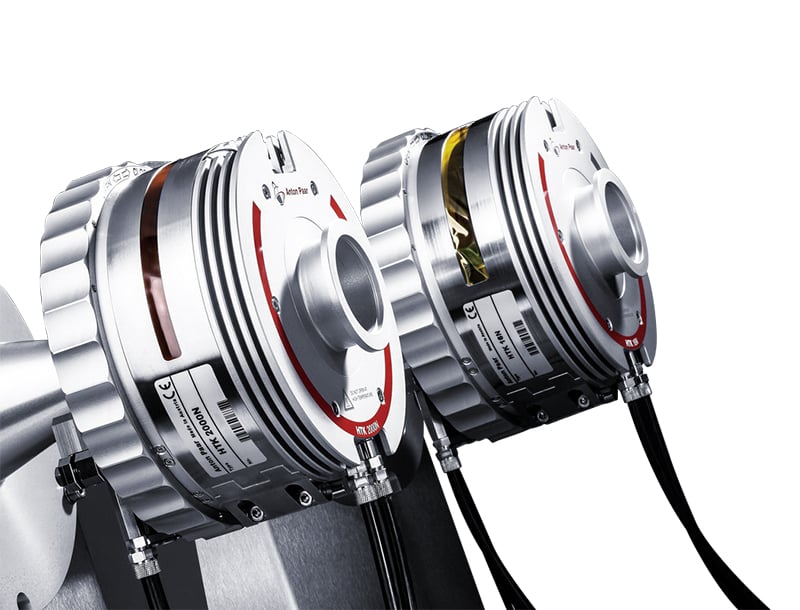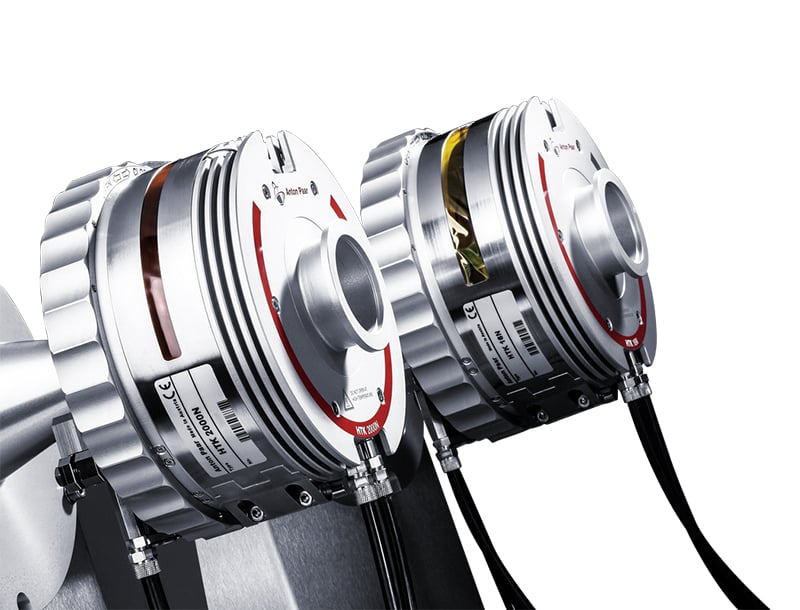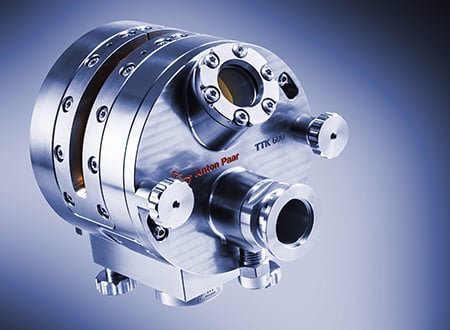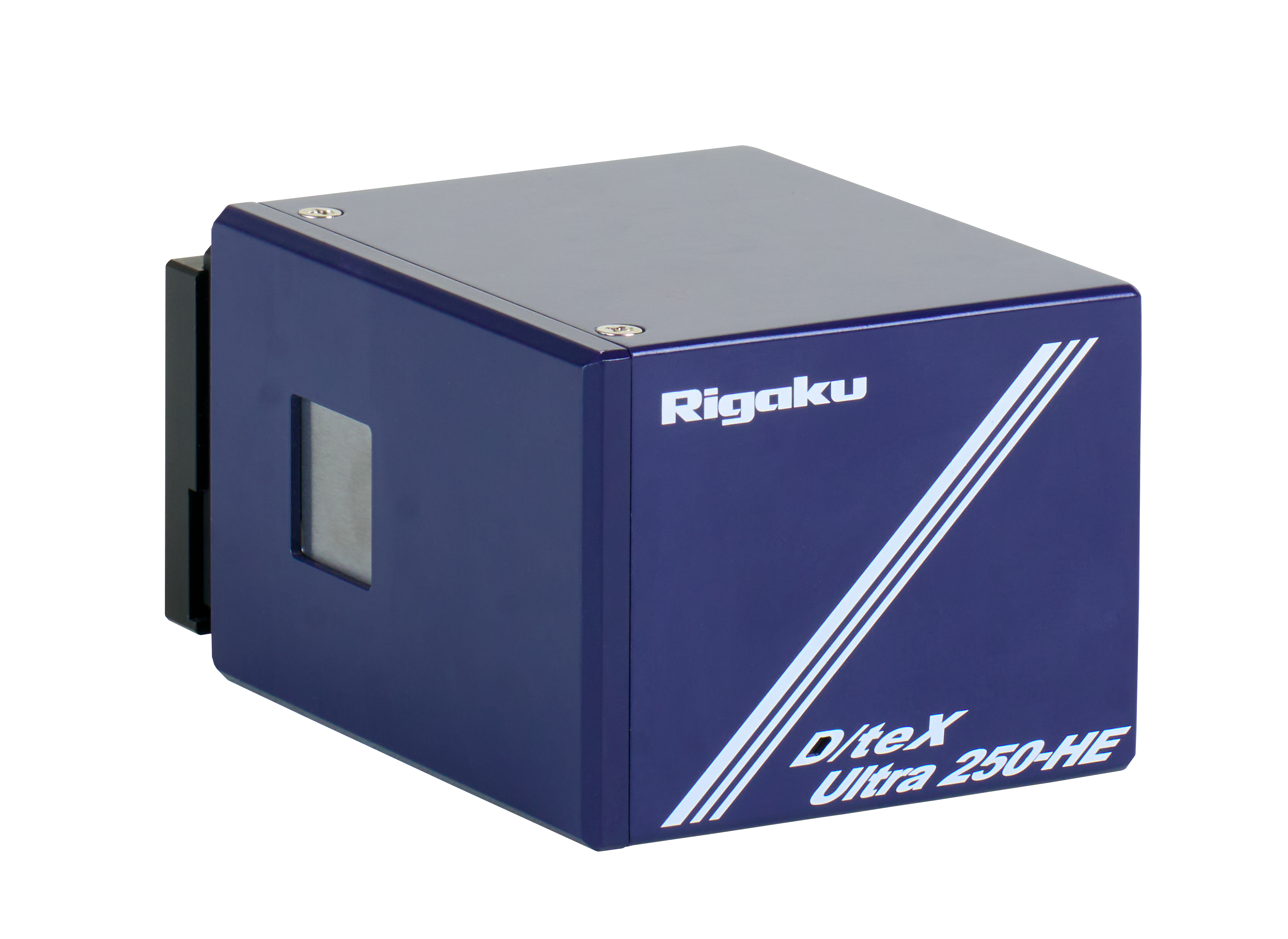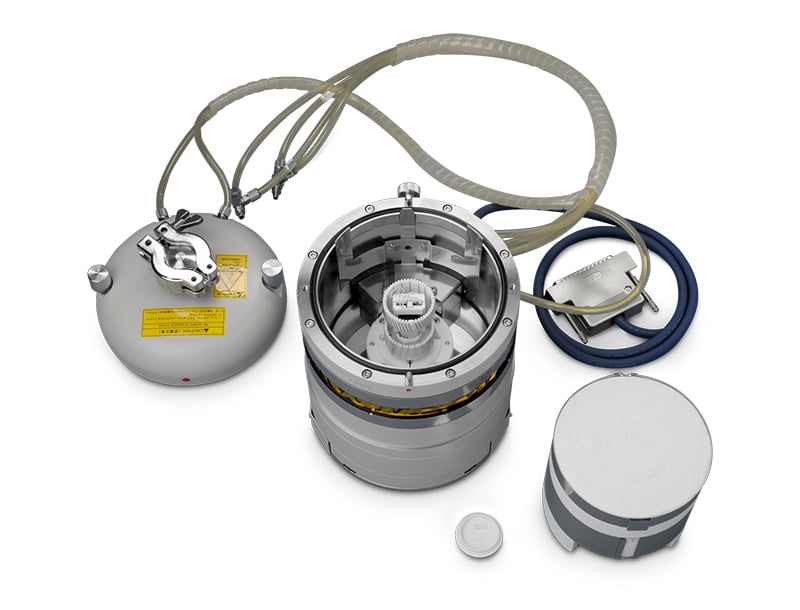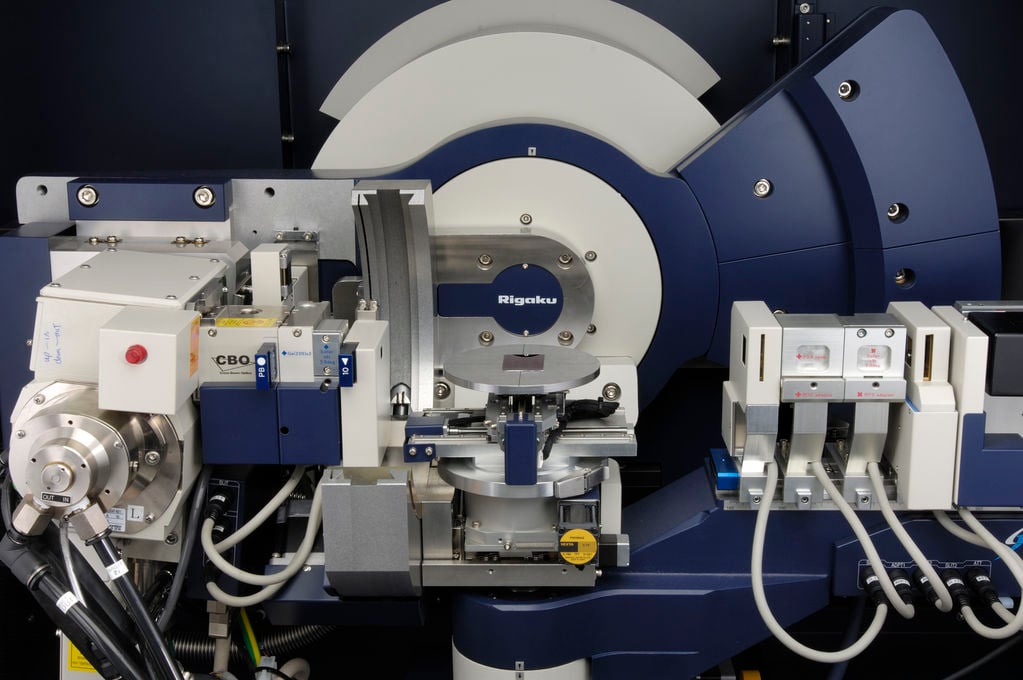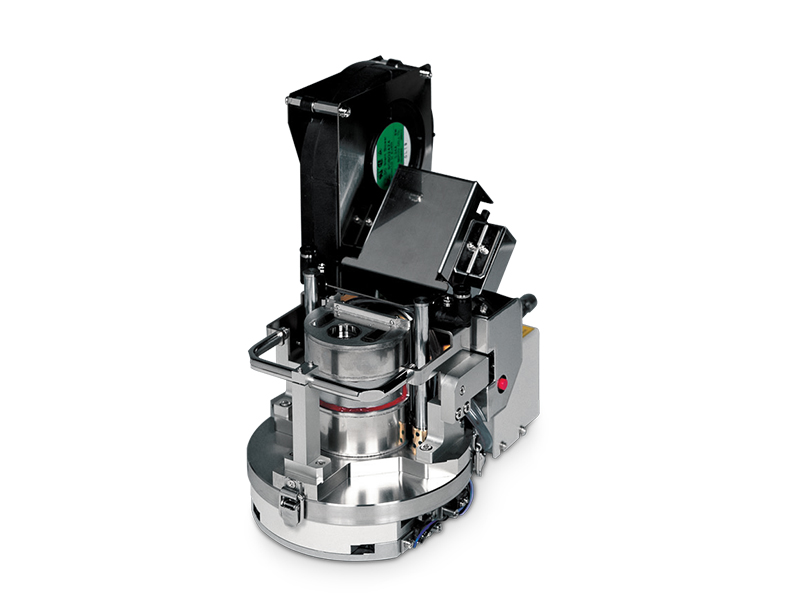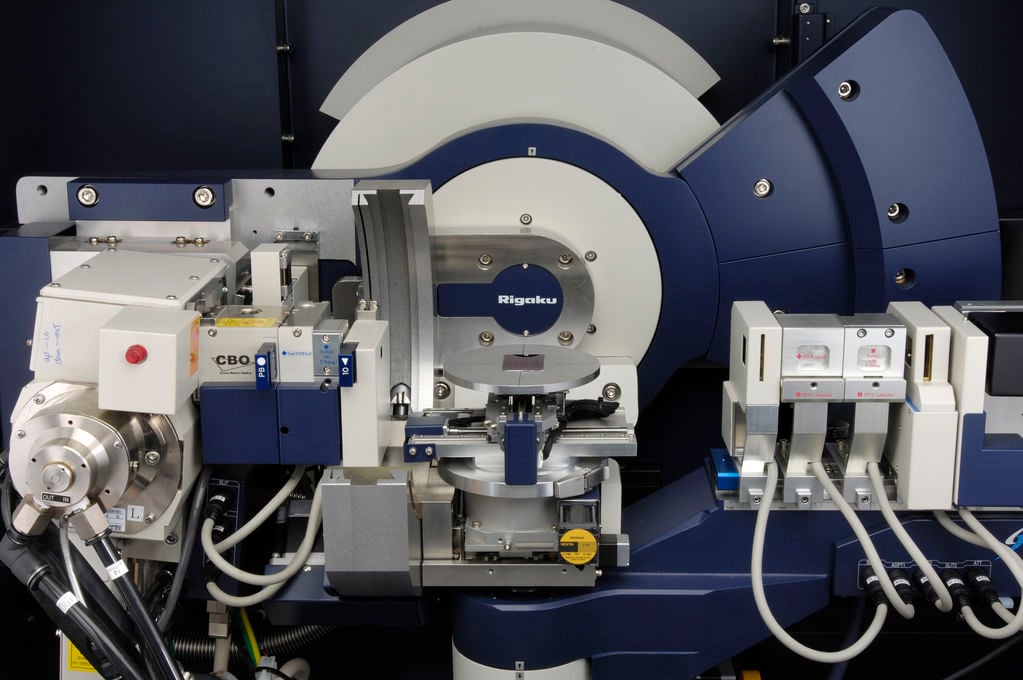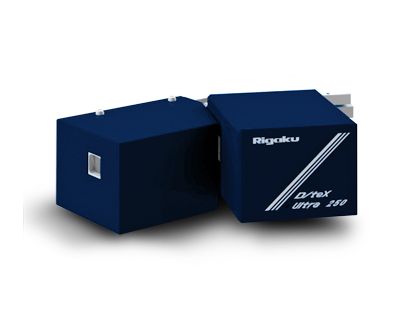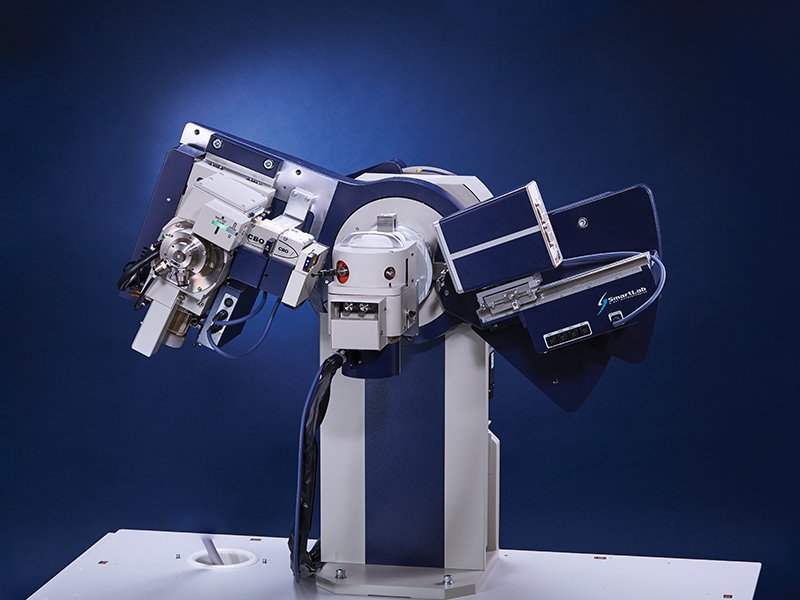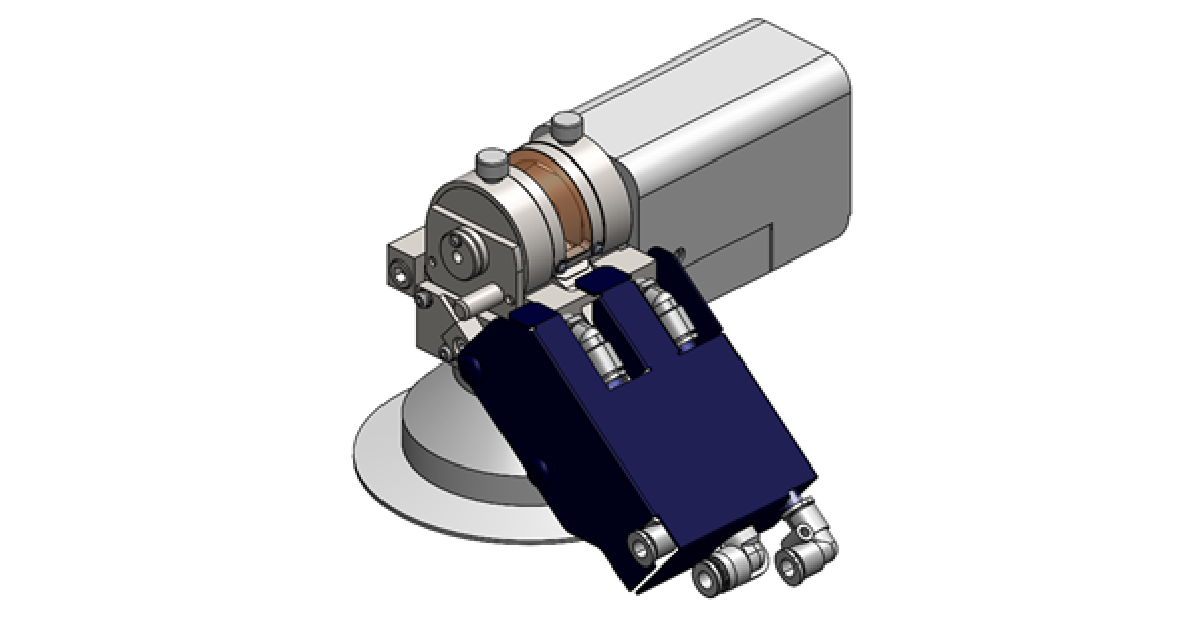SmartLab SE
Multipurpose X-ray Diffraction System with Built-In Intelligent Guidance
Powder diffraction, thin film diffraction, SAXS, pole figure, residual stress and non-ambient experiments
The SmartLab SE is a highly versatile multipurpose X-ray diffractometer with built-in intelligent guidance. It offers continued refinement of the original ease of use features that enabled the original SmartLab to receive the R&D 100 Award in 2006: automatic alignment, component recognition, cross beam optics and advanced photon counting hybrid pixel array detectors (HPAD).
.jpg?width=800&height=610&name=SmartLab%20SE%20highly%20versatile%20multipurpose%20X-ray%20diffractometer%20(doors%20open).jpg)
.jpg?width=800&height=610&name=SmartLab%20SE%20highly%20versatile%20multipurpose%20X-ray%20diffractometer%20(doors%20closed).jpg)
SmartLab SE Overview
SmartLab Studio II incorporates a built-in Guidance expert system that suggests the optimal hardware configuration and settings for specific application measurements. The software will determine which optics are most appropriate for a given application, determine the instrument settings and execute the measurement, delivering a completely automated measurement sequence. Since the SmartLab SE has built-in component recognition, Guidance will not only tell you how you should configure the SmartLab SE for a given measurement, it will also warn you if you have not configured it properly. Expert advice coupled with hardware that will confirm the correct configuration is the foundation of the SmartLab SE platform.
HyPix-400: next generation 2D detector
With the SmartLab SE, Rigaku introduces the available HyPix-400, a semiconductor hybrid pixel array detector that was specifically designed for multipurpose X-ray diffractometers. Its large active area, high angular resolution and ultra-high dynamic range make it the perfect, affordable, 2D detector solution for a large variety of applications, including powder and thin film diffraction. Please note that the D/teX Ultra 250 silicon strip detector is also available as a standard detector choice if desired.
Automatic alignment for maximized uptime
Changing hardware configurations or consumables on some diffractometers is so daunting that people often invite their service engineer to perform the task. This can be costly and time consuming. The optics configuration on the SmartLab SE is self-aligning. From the tube height to the monochromator alignment, all of the optical alignment is done automatically under computer control. This feature drastically reduces down time and cost of ownership of the instrument, and it allows you to be confident that your instrument will always be in an aligned condition.
SmartLab SE Features
SmartLab SE Videos
SmartLab SE Specifications
| Technique | X-ray diffraction | |
|---|---|---|
| Benefits | Powder diffraction, thin film diffraction, SAXS, pole figure, residual stress and non-ambient experiments | |
| Technology | Multipurpose θ-θ X-ray diffractometer with built-in intelligent Guidance | |
| Attributes | 3 kW sealed X-ray tube D/teX Ultra 250 silicon strip detector Vertical type θ-θ geometry |
|
| Options | HyPix-400 (2D HPAD) detector | |
| Computer | External PC, MS Windows OS, SmartLab Studio II software | |
| Dimensions | 1270 (W) x 1880 (H) x 1220 (D) mm | |
| Mass | Approx. 800 kg (core unit) | |
| Power requirements | 3Ø, 200 VAC 50/60 Hz 30 A or 1Ø, 220-230 VAC 50/60 Hz 40 A |
|
SmartLab SE Options
The following accessories are available for this product:
SmartLab SE Application Notes
The following application notes are relevant to this product
-
XRD2001 - Orientation and Residual Stress Evaluation in Metal Thin Films
-
BATT1012 - Inference of Valence and Li Ion Diffusion Path Using the BVS Method
-
BATT1011 - Measurement of Cathode Material NCM Using XSPA-400 ER High-Energy Resolution Detector
-
BATT1010 - Investigation of Phase Transition Behavior upon Cathode Material NCM Firing
-
BATT1001 - Qualitative Analysis of Impurities (Sulfate) in Mixed Nickel-Cobalt Sulfide
-
PHRM0002 - In-Situ DSC-Humidity PXRD Analysis for Pharmaceuticals
-
BATT0003 - Battery Performance
-
BATT0001 - Battery Material Development
-
B-XRD1143 - Verifying the Validity of Crystallite Sizes Determined by the FP Method
-
B-XRD1129 - Variable Humidity Measurement of a Drug Substance using XRD-DSC and a Humidity Controller
-
B-XRD1118 - Quick Pole Figure Measurement of a Metal Material using 2DD
-
B-XRD1119 - Quantitative Characterization of Polymer film by Orientation Function
-
B-XRD1115 - Quantitative Analysis of γ-Al₂O₃ by the DD Method
-
B-XRD1132 - Quantitative Analysis of Glass with the DD Method
-
B-XRD1142 - Quantitative Analysis of Crystal Polymorphs by the DD Method
-
B-XRD1093 - Quantitative Analysis of Amorphous Components in Cement
-
B-XRD1001 - Quantitative Analysis of a 4-component Sample
-
B-XRD1111 - Quantitative Analysis of 3-component Sample by DD method
-
B-XRD1146 - Quantification of Blast Furnace Slag by Rietveld Refinement using Reference Intensity Ratio
-
B-XRD1002 - Quantification of a 4-component Sample using RIR method
-
B-XRD1121 - Phase Identification of Mixed Powder by Real-time Analysis
-
B-XRD1103 - Phase Identification of a Coarse-grained Trace Component in a Mineral Powder using 2D XRD
-
B-XRD1021 - Phase Changes of Pharmaceuticals as a Function of Temperature and Humidity
-
B-XRD1030 - Particle Diameter Distribution of Gold Nanoparticles
-
B-XRD1020 - Observation of Dehydration Process of Hydrate by XRD-DSC
-
B-XRD1128 - Observation of Dehydration Behavior of a Drug Substance using TG-DTA and XRD-DSC
-
B-XRD1117 - Observation of a Phase Transition at High Temperature under Various Atmospheres
-
B-XRD1023 - Measurement of Pseudo-polymorph Impurities in Tablets
-
B-XRD1063 - Measurement of a Film Sample
-
XRD1003 - How to Evaluate Solid Pharmaceutical Drugs (3): Confirming Hydrates
-
XRD1002 - How to Evaluate Solid Pharmaceutical Drugs (2): Confirming the Presence/absence of Amorphous Substances
-
XRD1001 - How to Evaluate Solid Pharmaceutical Drugs (1): Confirming the crystal form of an API
-
B-XRD1147 - High-precision Quantitative Analysis of Clinker Mineral Polymorphs by Rietveld Refinement
-
B-XRD2030 - Evaluation of Uniformity of Thin Film Thickness by X-ray Reflectivity Mapping
-
B-XRD2027 - Evaluation of Uniformity of a Single CrystalSubstrate by Rocking Curve Measurement
-
B-XRD3005 - Evaluation of Residual Stress of Thin Films by GI-XRD and the Multiple hkl Method
-
B-XRD1113 - Evaluation of Oxidation State by the BVS Method
-
B-XRD1150 - Evaluation of Graphitization Degree of Lithium-ion Battery Carbon Anode Material by X-ray Diffractometry
-
B-XRD1104 - Evaluation of Grain Condition and Orientation of Cemented carbide using 2D XRD
-
B-XRD2031 - Evaluation of Curvature of a Single Crystal Substrate by Rocking Curve Measurement
-
B-XRD1078 - Evaluation of Crystallite Size and Pore Size distribution of Fuel Cell Materials
-
B-XRD1149 - Evaluation of Barium Titanate Polymorphs by Rietveld Analysis
-
B-XRD1018 - Crystallite Size Distribution of Zinc Oxide Nanoparticles
-
B-XRD1071 - Crystallite Size Analysis of a Catalyst Material by the Scherrer Method
-
B-XRD1014 - Crystal Orientation Analysis of Rolled Sheet Material by Pole Figure Measurement
-
B-XRD1009 - Charging-discharging of Cathode Materials in Li-ion Batteries
-
B-XRD1106 - Charge/discharge Process of Li-ion Battery Positive Electrode
-
B-XRD2025 - Analysis of Uniaxially Oriented Film by Wide-range RSM
-
B-XRD2026 - Analysis of Epitaxial Films on In-plane Anisotropic Substrates by Wide-Range RSM
-
B-XRD1140 - Accurate and Highly Precise Quantitative Analysis of Cement Samples using Rietveld Refinement
-
B-XRD1011 - Temperature Dependence of a Lattice Constant
SmartLab SE Resources
Webinars
| X-ray Diffraction Measurements for Battery Research | Watch the Recording |
| How to Run in Operando XRD Experiments | Watch the Recording |
| When to Use XRD and How to Set Up Experiments for Li-ion Battery Research | Watch the Recording |
| Simultaneous XRD-DSC – The sum Is Much Greater than the Parts | Watch the Recording |
| Component Analysis and Standardless Quantitative Analysis for Pharmaceutical Applications | Watch the Recording |
| In-Depth Overview of the Use of X-ray Diffraction (XRD) in the Investigation of Asbestos and Respirable Silica | Watch the Recording |
| Powder X-ray Diffraction (XRD) for Pharmaceuticals | Watch the Recording |
| Dissolution Rate Enchancement of Poorly Water Soluble Drugs - Role in XRPD in the Pharmaceutical Formaulation Development | Watch the Recording |
| Combined XRD-DSC for Pharmaceuticals | Watch the Recording |
| The Application of Chemometric and Statistical Analysis Techniques for X-ray Diffraction Data: Quantitative Analysis and Lot Release | Watch the Recording |
| Introduction of Part 11 Compliant Features in SmartLab Studio II | Watch the Recording |
| On the Diffraction Line Profiles in the Rietveld Method | Watch the Recording |
Rigaku Journal articles
| Read the Article | |
| Read the Article | |
| Read the Article | |
| Read the Article | |
| Read the Article | |
| Read the Article |
SmartLab SE Events
Learn more about our products at these events
-
EventDatesLocationEvent website
-
34th Annual Meeting of the German Crystallographic Society (DGK)February 25 2026 - February 28 2026Lübeck, Germany
-
Pittcon 2026March 9 2026 - March 11 2026San Antonio, TX, USA
-
AnalyticaMarch 24 2026 - March 27 2026Munich, Germany
-
BCA Spring Meeting 2026March 30 2026 - April 1 2026Leeds, United Kingdom
-
12th Pacific Rim International Conference on Advanced Materials and Processing (PRICM12)August 9 2026 - August 13 2026Gold Coast Queensland, Australia
-
27th Congress and General Assembly of the IUCrAugust 11 2026 - August 18 2026Calgary, Alberta, Canada
SmartLab SE Training
Upcoming training sessions
-
TitleDatesCostLocationNotesCourse outlineRegistration form
-
SmartLab training (EMEA)March 8 2026 - March 12 2026Please contact ECOE@rigaku.comNeu-Isenburg, GermanySmartLab training (EMEA)
-
SmartLab training (EMEA)June 28 2026 - July 2 2026Please contact ECOE@rigaku.comNeu-Isenburg, GermanySmartLab training (EMEA)
-
SmartLab training (EMEA)October 18 2026 - October 22 2026Please contact ECOE@rigaku.comNeu-Isenburg, GermanySmartLab training (EMEA)
SmartLab SE

Contact Us
Whether you're interested in getting a quote, want a demo, need technical support, or simply have a question, we're here to help.

